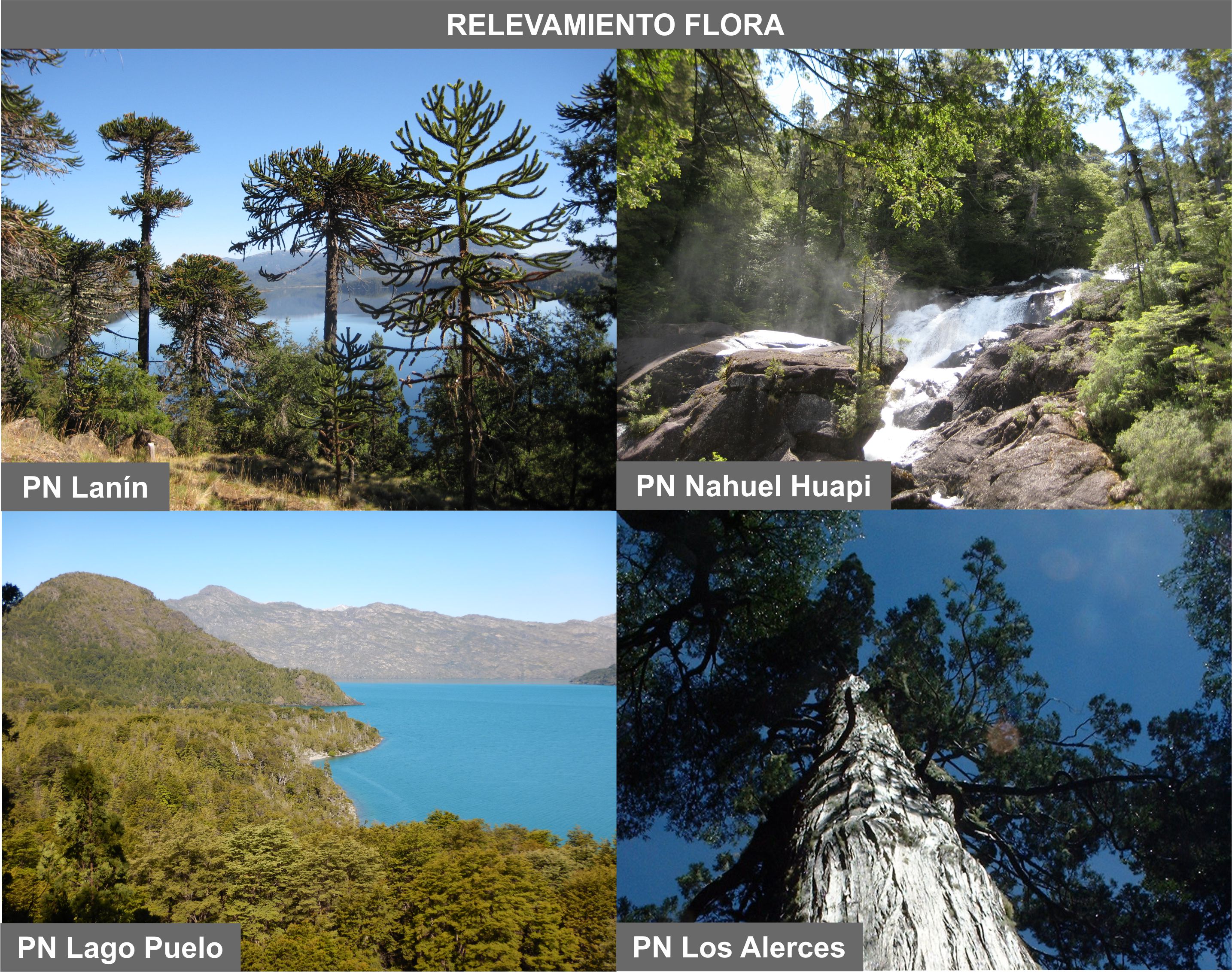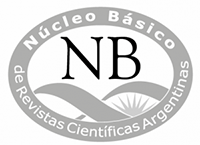Groundwork matters: inventory of native and exotic plants of the northwestern Patagonian National Parks
DOI:
https://doi.org/10.31055/1851.2372.v58.n1.38419Keywords:
biodiversity, conservation, exotic species, native species, National Parks of Argentina, species inventory, species richnessAbstract
Background and aims: Inventories in protected areas are essential for planning conservation actions. We aim to: provide a database of the vascular plant species of the National Parks of northwestern Patagonia, Argentina; highlight the singularity of these Parks; and analyze the incidence of exotic species in the protected areas of this region.
M&M: We generated a database of the species of Lanín, Nahuel Huapi (including PN Los Arrayanes), Lago Puelo and Los Alerces National Parks. For each species, the following variables were recorded: botanical family, scientific name, common name, native or exotic character for Argentina, habit and environment. The presence of each species was supported by a reference herbarium specimen. The richness and taxonomic composition of native and exotic species, and of native species exclusive to each Park and of exotic species present in all of them were analyzed. Species richness by habit and environment was also determined.
Results: A total of 1304 species, subspecies and varieties were recorded, 975 are native to Argentina and 329 are exotics. The percentage of exotic species ranged from 17% (Lanín) to 31% (Lago Puelo).
Conclusions: The Parks analyzed have a diverse and unique native flora and their biodiversity can be strongly threatened by the high percentage of exotic plant species. The database generated is a fundamental tool for planning conservation and management policies in these Parks.
References
BARTHÉLÉMY, D., C. BRION & J. PUNTIERI. 2008. Plantas – Plants Patagonia. Vázquez–Mazzini Editores, Buenos Aires.
BROWN, J. H. 1984. On the relationship between abundance and distribution of species. Amer. Naturalist 124: 255–279. https://doi.org/10.1086/284267
CABRERA, A. L. 1939. Las compuestas del Parque Nacional del Nahuel Huapi. Revista del Museo de La Plata n.s. Sección Botánica 2: 227–396.
CABRERA, A. L. & A. WILLINK. 1980. Biogeografía de América Latina. Secretaría General de la Organización de los Estados Americanos, Washington DC.
DATRI, L., A. FAGGI & L. GALLO. 2017. Crack willow changing riverine landscapes in Patagonia. Ecohydrology 10: e1837. https://doi.org/10.1002/eco.183
DEZZOTTI, A., R. SBRANCIA, A. MORTORO & C. MONTE. 2009. Invasión biológica de Pinus ponderosa y Pinus contorta: estudio de caso de una plantación en la Patagonia noroccidental. Investigación Agraria. Sistemas y Recursos Forestales 18: 181–191. https://doi.org/10.5424/fs/2009182-01061
DONOSO ZEGERS, C. (ed.). 2006. Las especies arbóreas de los bosques templados de Chile y Argentina, Autoecología. Marisa Cuneo Ediciones, Valdivia.
EZCURRA, C. & C. BRION. 2005. Plantas del Nahuel Huapi, Catálogo de la flora vascular del Parque Nacional Nahuel Huapi, Argentina. Universidad Nacional del Comahue y Red Latinoamericana de Botánica, San Carlos de Bariloche.
FERREYRA, M. & F. VIDOZ. 2007. Exploración de la flora, vegetación y fauna altoandinas en el Parque Nacional Lago Puelo. Informe final. Parque Nacional Lago Puelo, Chubut.
FUNES, M. C., J. SANGUINETTI, P. LACLAU, L. MARESCA, L. GARCÍA, F. MAZZIERI, L. CHAZARRETA, D. BOCOS, D. F. LAVALLE, P. ESPÓSITO, A. GONZÁLEZ & A. GALLARDO. 2006. Diagnóstico del estado de conservación de la biodiversidad en el Parque Nacional Lanín: su viabilidad de protección en el largo plazo. Informe final. Parque Nacional Lanín, San Martín de los Andes.
HOLENSTEIN, K., W. D. SIMONSON, K.G. SMITH, T.M. BLACKBURN & A. CHARPENTIER. 2021. Non–native species surrounding protected areas influence the community of non–native species within them. Frontiers Ecol. Evol. 8: 1-12. https://doi.org/10.3389/fevo.2020.625137
HULME, P. E. 2018. Protected land: threat of invasive species. Science 361: 561–562. https://doi.org/10.1126/science.aau3784
IPBES. 2019. Summary for policymakers of the global assessment report on biodiversity and ecosystem services of the Intergovernmental Science–Policy Platform on Biodiversity and Ecosystem Services. (eds. Díaz, S. et al.) IPBES secretariat, Bonn, Germany. https://doi.org/10.5281/ zenodo.3553579
KITZBERGER, T., A. PEREZ, G. IGLESIAS, A.C. PREMOLI & T.T. VEBLEN. 2000. Distribución y estado de conservación del alerce (Fitzroya cupressoides) en Argentina. Bosque 21: 79–89.
https://doi.org/10.4206/bosque.2000.v21n1-09
KUTSCHKER, A., V. HECHEM, P. CODESAL, M. RAFAEL, S. LÓPEZ & V. SILVA. 2018. Diversidad de plantas exóticas en áreas sometidas a distintos disturbios en el Parque Nacional Los Alerces, Chubut (Argentina). Bol. Soc. Argent. Bot. 50: 47–59. https://doi.org/10.31055/1851.2372.v50.n1.10857
LEDIUK, K.D., M.A. DAMASCOS, J.G. PUNTIERI & M. SVRIZ. 2014. Differences in phenology and fruit characteristic between invasive and native woody species favor exotic species invasiveness. Plant Ecol. 215: 1455–1467. https://doi.org/10.1007/s11258-014-0402-3
LEDIUK, K.D., M.A. DAMASCOS, J.G. PUNTIERI, & M.I. DE TORRES CURTH. 2016. Population dynamics of an invasive tree, Sorbus aucuparia, in the understory of a Patagonian forest. Plant Ecol. 217: 899–911.
https://doi.org/10.1007/s11258-016-0615-8
LIU, X., T.M. BLACKBURN, T.S.X. WANG, C. HUANG & Y. LI. 2020. Nat. Commun. 11: 2892. https://doi.org/10.1038/s41467–020–16719–2
MACARTHUR, R.H. & E.O. WILSON. 1967. The theory of island biogeography. Princeton University Press, Princeton.
MONACO, A. & P. GENOVESI. 2014. European Guidelines on Protected Areas and Invasive Alien Species, Council of Europe, Strasbourg, Regional Parks Agency – Lazio Region, Rome.
MOODLEY, D., FOXCROFT, C.L., NOVOA, A., PYŠKOVÁ, K. PERGL, J. & P. PYŠEK. 2020. Invasive alien species add to the uncertain future of protected areas. NeoBiota 57: 1–5.
https://doi.org/10.3897/neobiota.57.52188
ORELLANA, I. A. & E. RAFFAELE. 2016. The spread of the exotic conifer Pseudotsuga menziesii in Austrocedrus chilensis forests and shrublands in northwestern Patagonia, Argentina. N. Z. J. Forestry 40: 199–209.
PARITSIS, J. & M.A. AIZEN. 2008. Effects of exotic conifer plantations on the biodiversity of understory plants, epigeal beetles and birds in Nothofagus dombeyi forests. For. Ecol. Manage. 255: 1575–83.
https://doi.org/10.1016/j.foreco.2007.11.015
PYŠEK, P., P.E. HULME & W. NENTWIG. 2009. Glossary of the main technical terms used in the handbook. En: DAISIE (eds.) Handbook of alien species in Europe, pp. 375–379. Springer, Berlin.
https://doi.org/10.1007/978-1-4020-8280-1_14
R CORE TEAM. 2022. R: A language and environment for statistical computing. R Foundation for Statistical Computing, Vienna, Austria. URL https://www.R–project.org/.
RAFAEL, M. G. 2008. Estudio de la flora altoandina y su estado de conservación en cerros del Parque Nacional Los Alerces. Tesis de Licenciatura, Facultad de Ciencias Naturales – UNPSJB, Esquel.
RICHARDSON, D.M., A. B. R. WITT, J. PERGL, W. DAWSON, F. ESSL, H. KREFT, M. VAN KLEUNEN, P. WEIGELT, M. WINTER & P. PYŠEK. 2022. Plant invasions in Africa. En: Clements D.R., M.K. Upadhyaya, S. Joshi & A. Shrestha (Eds.), Global Plant Invasions, pp. 225–252. Springer Nature, Cham. https://doi.org/10.1007/978-3-030-89684-3_11
ROSENZWEIG, M.L. 1995. Species diversity in space and time. University Press, Cambridge. https://doi.org/10.1017/CBO9780511623387
RSTUDIO TEAM. 2022. RStudio: Integrated Development for R. RStudio, PBC, Boston, MA URL http://www.rstudio.com/
SARASOLA, M.M., V. RUSCH, T.M. SCHLICHTER & C. GHERSA. 2006. Invasión de coníferas forestales en áreas de estepa y bosques de ciprés de la cordillera en la Región Andino Patagónica. Ecol. Austral 16: 143–156.
SCHULZE, K., K. KNIGHTS, L. COAD, J. GELDMANN, F. LEVERINGTON, A. EASSOM, M. MARR, S. H. M. BUTCHART, M. HOCKINGS & N. D. BURGESS. 2018. An assessment of threats to terrestrial protected areas. Conserv. Lett. 11: e12435. https://doi.org/10.1111/conl.12435
SIMBERLOFF, D., M. A. NUÑEZ, N. J. LEDGARD, A. PAUCHARD, D. M. RICHARDSON, M. SARASOLA, B. VANWILGEN, S. M. ZALBA, R. D. ZENNI, R. BUSTAMANTE, E. PEÑA & S. R. ZILLER. 2010. Spread and impact of introduced conifers in South America: Lessons from other southern hemisphere regions. Austral Ecol. 35: 489–504.
https://doi.org/10.1111/j.1442-9993.2009.02058.x
SØRENSEN, T. 1948. A method of establishing groups of equal amplitude in plant sociology based on similarity of species content and its application to analyses of the vegetation on Danish commons. Biol. Skr./Kongel. Danske Vidensk. Selsk. 5: 1–34.
SPEAR, D., C.L. FOXCROFT, H. BEZUIDENHOUT & M. A. MCGEOCH. 2013. Human population density explains alien species richness in protected areas. Biol. Conserv. 159: 137–147.
https://doi.org/10.1016/j.biocon.2012.11.022
SPEZIALE, K. & C. EZCURRA. 2011. Patterns of alien plant invasions in northwestern Patagonia, Argentina. J. Arid Environ. 75: 890–897. https://doi.org/10.1016/j.jaridenv.2011.04.014
SPEZIALE, K., A. RUGGIERO & C. EZCURRA. 2010. Plant species richness – environment relationships across the Subantarctic – Patagonian transition zone. J. Biogeog. 37: 449–464.
https://doi.org/10.1111/j.1365-2699.2009.02213.x
STRAYER, D. L. 2012. Eight questions about invasions and ecosystem functioning. Ecol. Letters 15: 1199–1210. https://doi.org/10.1111/j.1461-0248.2012.01817.x
THIERS, B. 2022. Index Herbariorum. A global directory of public herbaria and associated staff. New York Botanical Garden’s Virtual Herbarium. http://sweetgum.nybg.org/science/ih
WICKHAM, H. 2016. Ggplot2: Elegant Graphics for Data Analysis. Springer–Verlag, New York. https://doi.org/10.1007/978-3-319-24277-4
WIERSEMA, J. H. & B. LEÓN. 1999. World economic plants: a standard reference. CRC Press, Boca Raton, Florida. https://doi.org/10.1201/9781482274431
ZALBA, S.M. & C.B. VILLAMIL. 2002. Woody plant invasion in relictual grasslands. Biol. Invasions 4: 55–72. https://doi.org/10.1023/A:1020532609792
ZULOAGA, F. O. & A. M. ANTON. 2012–2022. Flora vascular de la República Argentina. Vols. 2, 3, 7, 8, 13, 14, 15, 17, 19 y 20. Gráficamente Ediciones, Córdoba;
ZULOAGA, F. O., O. MORRONE & M.J. BELGRANO. 2008. Catálogo de las plantas vasculares del Cono Sur. Missouri Botanical Garden Press, Saint Louis.
ZULOAGA, F. O., O. MORRONE & D. RODRÍGUEZ. 1999. Análisis de la biodiversidad en plantas vasculares de la Argentina. Kurtziana 27: 17–167.

Downloads
Published
Issue
Section
License
Copyright (c) 2023 Carolina I Calviño, Cecilia Brion, María Damascos, Javier Grosfeld, Javier Puntieri, Romina Vidal Russell, Cecilia Ezcurra

This work is licensed under a Creative Commons Attribution-NonCommercial-NoDerivatives 4.0 International License.
Provides immediate and free OPEN ACCESS to its content under the principle of making research freely available to the public, which fosters a greater exchange of global knowledge, allowing authors to maintain their copyright without restrictions.
Material published in Bol. Soc. Argent. Bot. is distributed under a Creative Commons Attribution-NonCommercial-ShareAlike 4.0 International license.










